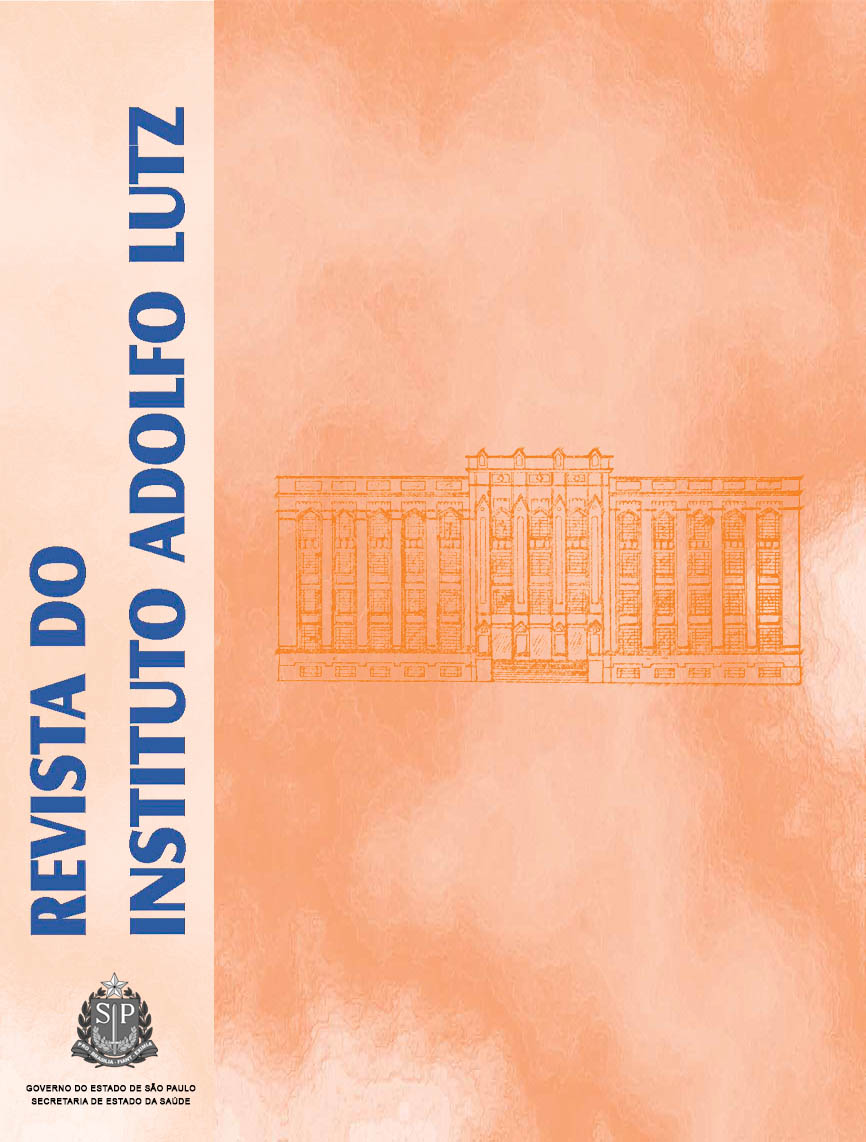Abstract
Helminthes and enteric protozoa are serious problem of public health in developing countries. This study analyzed the prevalence of intestinal parasites in preschool children attend at basic health unities (BHS) in the city of Rio Grande, Rio Grande do Sul, Brazil. Stool samples collected from 144 children were analyzed, from October 2009 to March 2010. The observed prevalence rate for enteroparasites was 17.4 %, including eggs of nematodes Ascaris lumbricoides (11.1 %) and Trichuris trichiura (6.3 %), and cysts of protozoan Giardia lamblia (4.9 %). Also, cysts of protozoa considered as non-pathogenic, such as Entamoeba coli, Endolimax nana and Enteromonas hominis were found in 28.5 % of children. Regarding to the BHSs prevalence, in BHS-1 was detected a positivity of 36.4 %, 11.1 % in BHS-3, 14.8 % in BHS-4, 8 % in BHS-5 and 19.2 % in BHS-6. No positivity was detected in the stool samples from BHS-2. The prevalence of intestinal parasites registered in the studied population suggests the occurrence of probable conditions for re-infection, and the need to implement the basic sanitation procedures and programs which will provide an improvement in the life quality of these children.References
1. World Health Organization – WHO. Soil-transmitted helminth infections. [acesso 11 Jul 2013]. Disponível em: [http://www.who.int/mediacentre/factssheets/fs366/en/].
2. Agudelo-Lopez S, Rodríguez LG, Coronado X, Orozco A, Valencia-Gutierrez CA, Restrepo-Betancur LF, et al. Prevalencia de Parasitosis Intestinales y Factores Asociados en un Corregimiento de la Costa Atlántica Colombiana. Rev Salud Pública. 2008;10:633-42.
3. Barry MA, Weatherhead JE, Hotez PJ, Woc-Colburn L. Childhood parasitic infections endemic to the United States. Pediatr Clin N Am. 2013;60:471-85.
4. Andrade EC, Leite ICG, Rodrigues VO, Cesca MG. Parasitoses intestinais: uma revisão sobre seus aspectos sociais, epidemiológicos, clínicos e terapêuticos. Rev APS. 2010;13:231-40.
5. Ferreira GR, Andrade CFS. Some socioeconomic aspects related to intestinal parasitosis and evaluation of an educational intervention in scholars from Estiva Gerbi, SP. Rev Soc Bras Med Trop. 2005;38:402-5.
6. Brasil. Ministério da Saúde. Plano nacional de vigilância e controle das enteroparasitoses. Brasília, DF, 2005; 42p.
7. Facchini L, Piccini R, Tomasei E, Silveira D, Siqueira F, Rodrigues M. Desempenho do PSF no Sul e Nordeste do Brasil: Avaliação institucional e epidemiológica da Atenção Básica à Saúde. Ciênc Saúde Coletiva. 2006;11:669-81.
8. Ritchie LS. An ether sedimentation technique for routine stool examination. Bull US Army Med Dept. 1948;8:326.
9. Beck C, Araujo FAP, Olicheski ASB. Frequência da infecção por Giardia lamblia (Kunstler, 1882) em cães (Canis familiaris) avaliada pelo método de Faust e Cols. (1939) e pela coloração da auramina, no município de Canoas, RS, Brasil. Ciênc Rural. 2005;35:126-30.
10. Lalle M, Pozio E, Capelli G, Bruschi F, Crotti D, Cacció SM. Genetic heterogeneity at the b-giardin locus among human and animal isolates of Giardia duodenalis and identification of potentially zoonotic subgenotypes. Int J Parasitol. 2005;35:207-13.
11. Diniz-Santos DR, Jambeiro J, Mascarenhas RR, Silva LR. Massive Trichuris trichiura Infection as a Cause of Chronic Bloody Diarrhea in a Child. J Trop Pedriatr. 2005;52:66-8.
12. Bhutia KL, Dey S, Singh V, Gupta A. Ascaris lumbricoides causing infarction of the mesenteric lymph nodes and intestinal gangrene in a child: a case report. GMS. 2011;9:1-6.
13. Macedo HS. Prevalência de Parasitos e Comensais Intestinais em Crianças de Escolas da Rede Pública Municipal de Paracatu (Minas Gerais). Rev Bras Anal Clin. 2005;37:209-13.
14. Neves DP, Melo AL, Linardi PM, Vitor RWA. Parasitologia Humana. 11th edn. 494 pp. São Paulo, Atheneu. 2005.

This work is licensed under a Creative Commons Attribution 4.0 International License.
Copyright (c) 2012 Instituto Adolfo Lutz Journal
